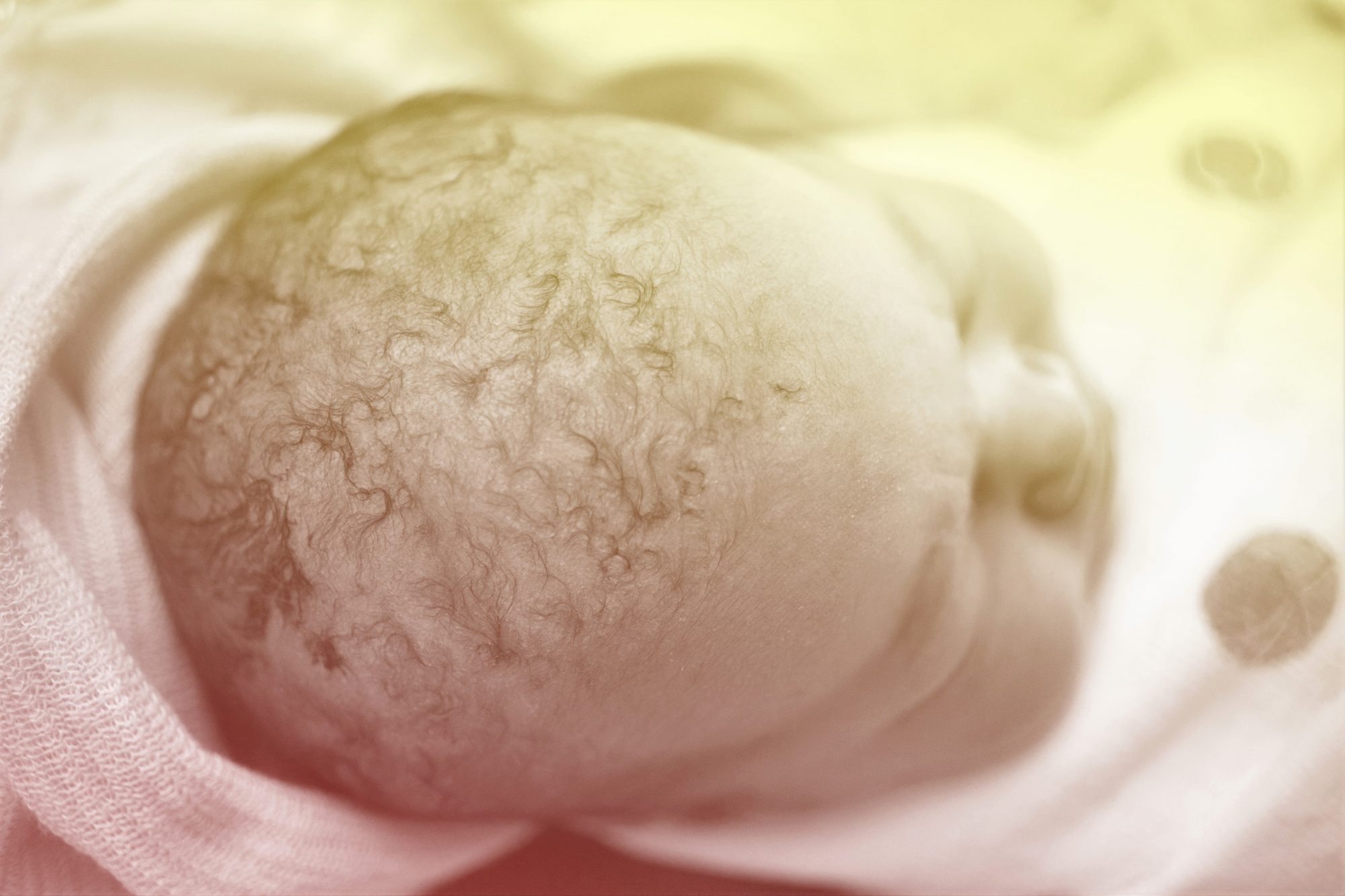
Soon-to-be parents shouldn't expect their new baby to emerge from the womb with a perfectly smooth, round head. Infants come out with misshapen, elongated, and even swollen noggins all the time and it's completely normal. One of the most common birth conditions affecting babies is caput succedaneum, defined as swelling due to fluid collection between the skin and the layer of connective tissue above the skull. It can give the appearance of a puffy bump or "cap" on the infant's head.
A baby's head is, typically, disproportionately large for her body, and the plates of her skull aren't fused together yet. "That's by design so they can get through the birth canal," says Nicole Glynn, M.D., pediatrician with Getzwell Pediatrics in San Francisco and a member of the American Academy of Pediatrics (AAP).
Caput Succedaneum Causes and Treatment
During vaginal delivery, the flexible plates that form an infant's skull contract and overlap to help the baby squeeze through the cervical opening and into the birth canal. Pressure from the mother's dilated cervix or vaginal walls can cause the baby's head to swell. The use of forceps or suctioning are additional risk factors for caput succedaneum and can make the condition more pronounced.
This type of swelling can happen before labor too, according to the AAP, if the fetus "drops" well before birth, making head-first contact with the mother's pelvis. Likewise, the mother's water breaking early can have a similar effect, since the "water" (or amniotic fluid) is what normally cushions an infant's head against their mother's pelvic bones. For both of these reasons, even babies born via C-section can experience caput succedaneum, says Dr. Glynn.
There's no treatment for caput succedaneum and it's not dangerous—it typically clears up on its own. And while it may cause your baby slight discomfort, it does not cause severe pain, nor does it require any special care by parents. "When a baby has caput succedaneum, it's usually resolving by the time I see them for their first visit a few days after they're born," says Dr. Glynn.
Caput Succedaneum vs. Cephalohematoma
Caput succedaneum, by definition, is not a hematoma, or localized bleeding, but it can look a lot like cephalohematoma. This is another infant condition related to birth injuries, but unlike caput, it's characterized by internally broken capillaries and pooling of blood deep under the skin, closer to the skull. Cephalohematoma usually heals on its own, too, though it may take a few months to resolve completely.
One way to tell the difference between the two conditions is to draw an imaginary line from the center of your baby's forehead to the nape of her neck. Swelling that's caused by caput succedaneum will cross this "midline" between the right and left brain. Swelling that's attributed cephalohematoma does not cross the midline, says Dr. Glynn, but will be contained to one side of it.
What If Baby\’s Caput Succedaneum Is Not Going Away?
"It is very rare, but both caput succedaneum and cephalohematoma can become infected," says Dr. Glynn. Cephalohematoma, in particular, can "calcify and eventually ossify, or turn to bone," she says, and, sometimes, surgery is needed to remove an "ossified cephalohematoma."
Dr. Glynn recommends contacting your doctor if you notice increasing redness or lesions growing in size on your baby's scalp, or if your little one is lethargic, extremely irritable, or running a fever, which is "never normal in a baby," she says.
